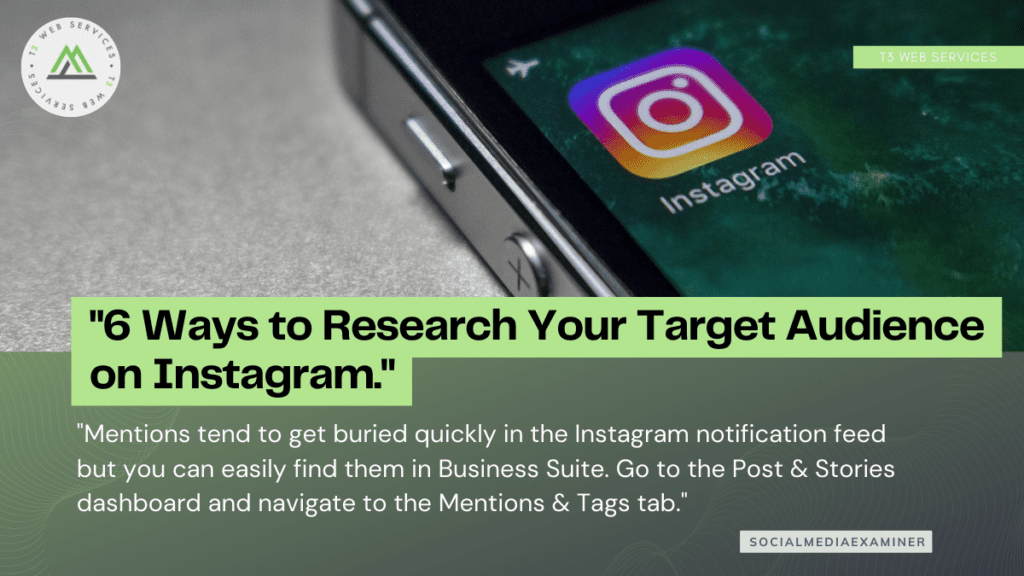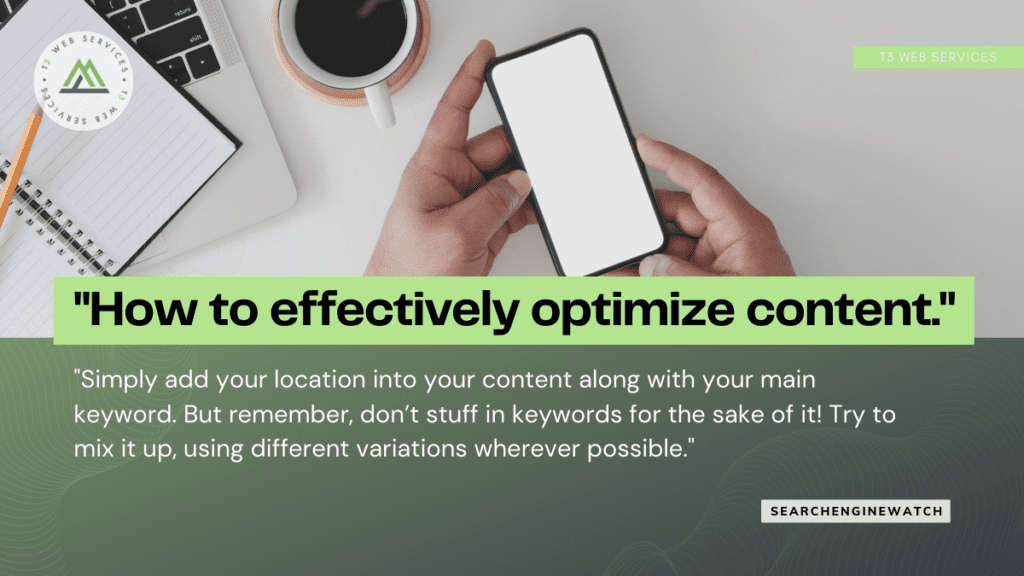As social media becomes increasingly prevalent in our everyday lives, it provides new opportunities for businesses to reach their target markets. One of the most popular social media platforms is Instagram, which has over 800 million monthly active users. Because of its visual nature, many businesses are using Instagram to showcase their products and services.
If you’re considering using Instagram for your business, it’s important to do your research first. By taking some time to understand how people are using this platform, you can better determine if it’s a good fit for your business and how to best use it to reach your target market.
Here are a few things you can learn about your target market from Instagram research:
– What kind of content are they interested in?
– What social media platforms are they using?
– How often are they using social media?
– What time of day are they most active on social media?
– What Hashtags are they using?
By understanding the answers to these questions, you can better create content that resonates with your target market and reaches them where they’re already spending their time. So, don’t forget to add Instagram research to your marketing efforts!
6 Ways to Research Your Target Audience on Instagram


#1: Check Instagram Audience Insights
Every product line or service offering has a target audience. But just because your brand wants to appeal to a specific segment doesn’t mean that’s who ultimately takes an interest in your business or follows your Instagram account.
Should you completely rethink your target market if your Instagram followers turn out to be markedly different from your intended target audience? Probably not. But reviewing your audience insights may prompt you to expand your targeting and reach a new, more lucrative customer base.
#2: Evaluate Instagram Content Analytics
Demographics and interests can tell you a lot about your current and potential audience on Instagram. But seeing what they respond to and how they react can give you even more nuanced insights.
While you’re in the Instagram app, scroll down to view content analytics on the Accounts Engaged tab. First, take a look at the total number of interactions for each type of content. Are users leaving a lot of comments on your content or are they more likely to save or share?
Next, identify the posts, stories, reels, and lives that generated the most engagement.

https://www.socialmediaexaminer.com/6-ways-to-research-your-target-audience-on-instagram/
How To Create Engaging Social Media Content: 12 Tips To Drive Results


1. Less Text, More Video
The message of this story needs to be clear and straightforward. If you’re marketing your brand on social media, make it a rule to add an image or video to everything you post.
Get creative for your brand. This way, you hit the key points to make a post trend. Post photos or videos that speak to your audience and watch those likes and comments rise.
2. Get Your Own Photos Taken
Here are three tips for unique social media images:
- Hire a local photographer to take photos that match your editorial calendar.
- If you’re starting out, you can take your pictures with a high-specs smartphone and some simple props.
- Make sure your images match the text around them. Photos should summarize concepts and drive home points, not simply to break up the text.
3. Repurpose Your Evergreen Content
When creating graphics, remember these tips:
- Showcase your content’s main points.
- Pull quotes from your content or reword your main points to make them sharable.
- Use tools and templates from platforms like Canva and Piktochart to create quality graphics.

https://www.searchenginejournal.com/engaging-social-media-content/454191/
Worried About Your SEO Future? Yes, You Will Survive the Google Helpful Content Update


Among the questions posed on the Google Search Central Blog that SEO-focused content marketers should ask:
- Are you using extensive automation to produce content on many topics?
- Are you mainly summarizing what others have to say without adding much value?
- Does your content leave readers feeling like they need to search again to get better information from other sources?
If the answer is yes to any of those questions, Google indicates it won’t be as pleased with your content as it has been.
Quality is at the heart of this change. It should merely weed out websites that simply failed to play Google’s game. For years, Google has emphasized that websites should provide a good experience — relevant, user-friendly content that loads quickly. Google put the spotlight on quality with its major Panda update in 2011 that targeted websites filled with thin content.

https://contentmarketinginstitute.com/articles/google-helpful-content-update
Fact-Checking: Get Your Facts Right


Double Check Everything
If you get a quote from someone that says the sky is blue, go outside and look up, just to be sure.
Okay, that might be an exaggerated example – but you get the point.
Double and triple-check everything.
If you find a useful quote or statistic online, track down the original source. See if you can find other reliable web pages with the same information.
Don’t be afraid to do a little research yourself. Crunch the numbers and try to find corroborating evidence.
Go To The Source
Speaking of tracking down the sources of stats and quotes: That’s a cornerstone of fact-checking so important, it merits expanding on now.
Have you ever had a teacher or professor tell you, in no uncertain terms, never to use Wikipedia as a source?
Well, that’s just as true when writing enterprise-level SEO content. Wikipedia might be useful in pointing you toward helpful sources, but it shouldn’t be your primary text.
Nor should any second-hand source. If another web page states something as a fact, confirm where it got that fact.

https://www.searchenginejournal.com/fact-checking-get-your-facts-right/463789/
5 Ways that UX Developers Influence SEO


1. SITE NAVIGATION AND EASE OF USE
It’s no secret that today’s digital consumers crave easy-to-use sites.
A complex website with pages ranking for different terms might seem like an excellent idea for SEO. However, from a UX perspective, the easier it is to navigate your website, the more your end-users will benefit.
According to a study from Ahrefs, well-optimized pages that rank for several keywords can be more beneficial than dozens of pages ranking for similar terms. At the same time, if the search engines have difficulty crawling all your pages due to a poor site navigation strategy, then some pages won’t get indexed.
2. USER-FRIENDLY PAGE LAYOUTS
There are countless cases where poor layout design and formatting disrupts SEO potential. For example, cluttering a page with too much information makes it tougher to read and index. At the same time, if your pages aren’t attractive and easy to navigate, customers are more likely to hit the back button.
If customers come to a website and immediately leave it again, this tells the search engines that they’re not finding what they need on those pages. That means Google will bump you to a lower position on the SERPs.

https://www.webdesignerdepot.com/2022/09/5-ways-that-ux-developers-influence-seo/
How to effectively optimize content


Think about your topic
Before you write content, you need to decide on the topic you’re going to cover. This might sound obvious, but it’s worth thinking about. Spending some extra time planning will help you to identify specific subjects and talking points you can discuss. This will help shape your keyword research, which plays a huge role in creating SEO-friendly content.
At this stage, it’s worth thinking about what you want to focus on. You want the topic to be broad enough that you can produce detailed content about it, but not so broad that you won’t be able to cover it all. It might be the case that you need to split the topic into multiple articles. Or if your topic is too vague, you may need to home in on something more specific.
Conduct detailed keyword research
Keyword research is and always has been an essential part of producing good content. It’s the basis for content production and making sure you’re ranking for relevant keywords that you have a good chance of competing for. When performing keyword research, you should be on the lookout for several different types of keywords.

https://www.searchenginewatch.com/2022/09/21/how-to-effectively-optimize-content/
Why B2B Companies are Entering the Editorial Space [& What You Can Learn From Them]


1. The B2B marketing industry is shifting.
Marketing SVP at HubSpot Kieran Flanagan says the B2B marketing industry has gone through four major phases in the last decade.
What started as a focus on decision-makers has now evolved into a community-led approach that leverages media and publishing.
Many brands follow a product-led growth approach, in which the product itself attracts consumers and drives retention.
2. The ad space is oversaturated.
On an episode of Marketing Against the Grain, CEO and co-founder of Notus, Yuliya Bel argues that ads no longer have the impact they used to.
“Like anything in marketing, there comes a point where it becomes saturated. Where people start to be like ‘Ok, we’ve seen this before, it’s no longer authentic or really speaking to us,’” she said.
She references an eBay study that revealed that brand search ad effectiveness was overestimated by over 4,000%.
With the incredibly high costs of running ads and rampant competition, this begs the question: Is the focus on ads for customer acquisition and engagement the best play?
She argues that investing in producing high-quality content and distribution tactics is the only way to ensure longevity in the online space.

https://blog.hubspot.com/marketing/b2b-companies-editorial-space?hubs_post-cta=blognavcard-marketing


Leave a Reply